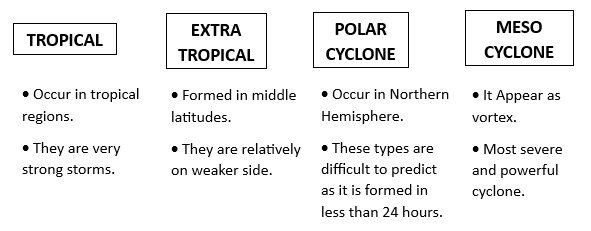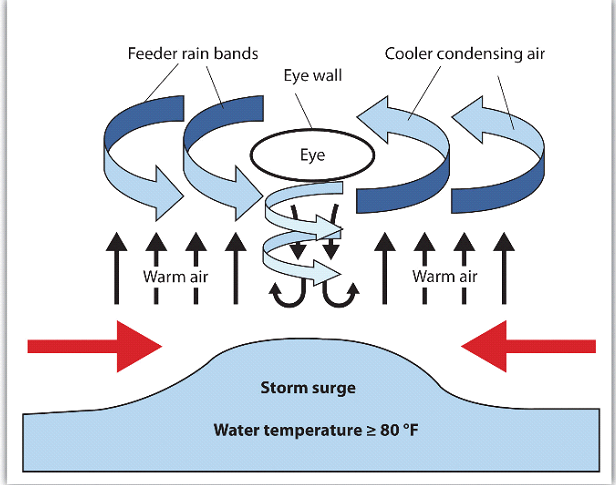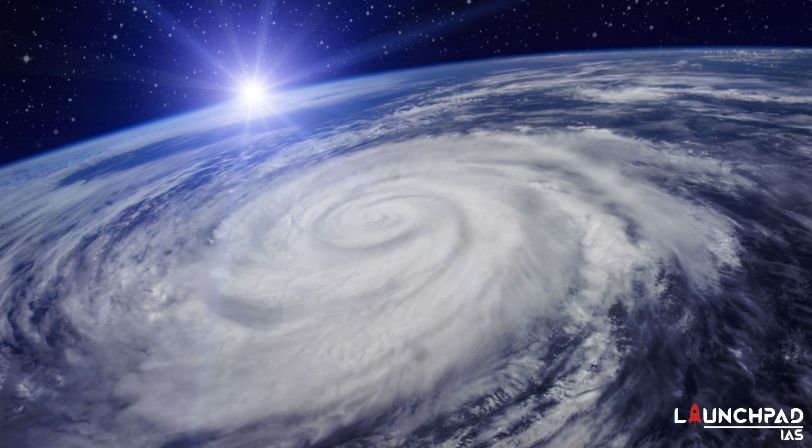- Cyclones are strong windstorms caused by wind blowing around an area having low atmospheric pressure.
- Cyclones when occur in the Northern Hemisphere move in an anti-clockwise direction and when they occur in the Southern Hemisphere they move in a clockwise direction.
- In the southern hemisphere, a cyclone is called a hurricane.
Type of Cyclones:

How are Cyclones formed?
- Tropical cyclones are formed over warm ocean water.
- The humidified warm air near the ocean surface starts to rise upwards.
- This is followed by the formation of a low preserve near the surface.

- The low-pressure area gets surrounded by cooler air from nearby areas, this cool air also becomes warm, and moist and starts to rise upwards.
- When this warm moist air rises, it cools down the water in the air, thereby forming clouds.
- During the process of spinning and growing, the wind and cloud interact with each other, and all this results in a cyclone.
How are cyclones named?
- The process of naming cyclones involves several countries in the region and is done under the aegis of the World Meteorological Organization (WMO).
- For the Indian Ocean region, a formula for naming cyclones was agreed upon in 2004. Eight countries in the region – Bangladesh, India, Maldives, Myanmar, Oman, Pakistan, Sri Lanka and Thailand – all contributed a set of names which are assigned sequentially whenever a cyclonic storm develops.
- Hudhud, Titli, Phethai, Fani, Vayu and Amphan are among the names of cyclones in the Indian Ocean region.
What are the terminologies for cyclones throughout the world?
They are given many names in different regions of the world – e.g. They are known as Typhoons in the China Sea and Pacific Ocean; Hurricanes in the West Indian islands in the Caribbean Sea and Atlantic Ocean; and Tornados in the Guinea lands of West Africa and southern USA.; Willy-willies in north-western Australia and Tropical Cyclones in the Indian Ocean.
India and cyclones
- Tropical cyclones originate over the Bay of Bengal, the Arabian Sea and the Indian Ocean. These tropical cyclones have very high wind velocity and heavy rainfall and hit the Indian Coastal states of Tamil Nadu, Andhra Pradesh, West Bengal, Odisha and Gujarat (These five states are more vulnerable to cyclone disasters than others in India).
- Most of these cyclones are very destructive due to high wind velocity and torrential rain that accompanies them.

Also, check out: VOLCANO


